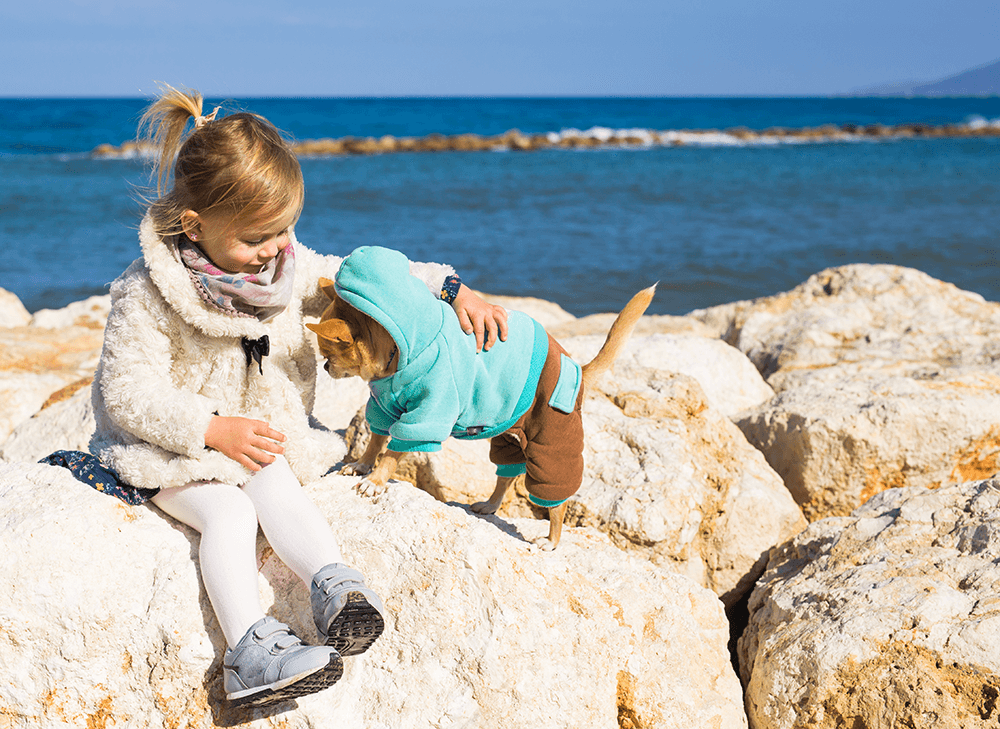While there is some evidence that dogs may know before their owners that a baby is on the way, this doesn’t mean they have any concept of what is to come. To help prepare them for this big change, we have put together a few tips to make the transaction as smooth as possible. By planning ahead and taking some time to prepare, you can help create a bond for life.
- Correct any behavioural issues that may be a problem during the nine months before your baby arrives. If your dog tends to pull on a lead, it is a good idea to train them to walk alongside a pram. This way, the risk of them pulling you and the pram over is significantly reduced. This is also the time to work on a good ‘sit’ and ‘stay’ command as well as correct any problems associated with jumping up on people. If you need help with this, it may pay to attend a few training classes.
- Playing audio recordings of baby noise is an excellent way to get your pet used to the sound of a baby before they are born. Start with the volume on low, and if your dog remains calm, slowly increase the volume. Like much dog-related training, a slow and steady gradient in intensity is the practice.
- Teach your dog a ‘go to’ place. This may be a bed or a mat. You can teach your dog to ‘go to’ a place by standing next to the spot and luring the pet, using a treat, onto the mat or bed while saying “mat” or “bed”. Once the pet is on the mat or bed, you should praise him/her and give treats. You should also use a release command (all those who attended our puppy school will know what a release command is :). Gradually increase the amount of time your pet stays on the mat/bed.
- Make changes in your pet’s routine, including when they get walked or feed. This way, they will be less likely to associate the changes with the arrival of the baby. And there will be a lot of changes associated with the arrival of the baby!
- Three weeks before the arrival of the baby lessen the amount of time you play with and pay attention to your dog. This may be contradictory to what you would think to do, however from the pet’s point of view, you were paying them all this attention, then the baby turned up and the attention decreased. This could create a negative association with the baby.
- Once your baby is born, bring a baby blanket home that has the smell of your new baby on it. Now you can start acclimatising your pet to the scent of the baby. If they are not bothered by the smell, you can even put it in their bed. Reward your pet with a treat and a pat for interacting positively with the scent.
- When you first arrive home with your new baby greet your dog alone. This is so they don’t get too excited and jump on the baby. Remember they may not have seen you for a while and will be delighted to see you home!
- Allow your pet to become accustomed to the smell, sight and sound of the new baby in their own time. It may be a few days before your pet even wants to go near the baby. When they do start showing an interest allow them to sniff the baby while controlled on a leash. Pat and use an encouraging voice while the pet sniffs the baby. If they are not interested or look worried, do not force these interacts. Allow them to take their time and do it at their own pace. If they are not feeling threatened, then they are less likely to react negatively.
- Once your dog is used to the baby and everyone is feeling more comfortable, you can allow your pet to sniff the baby off-leash. You MUST watch your pet closely. Watch how he interacts when the baby cries or suddenly screams. When interacting with the baby the baby must be elevated at all times and make sure an adult is between the dog and baby at all times.
Pets and children can grow up to be great friends, but this idea should not be taken for granted. You should never leave pets and young children alone together until a safe relationship has been established.
As your baby gets older, he/she will start to interact more with their furry, four-legged siblings. What children don’t realise is that pets don’t necessarily like being sat on, having their ears and tails pulled, or being chased around the house. Even the most patient of animals has their breaking point. Teaching your child the behaviors for interacting with your pet is essential to make sure everyone can co-exist in a safe and happy environment.


